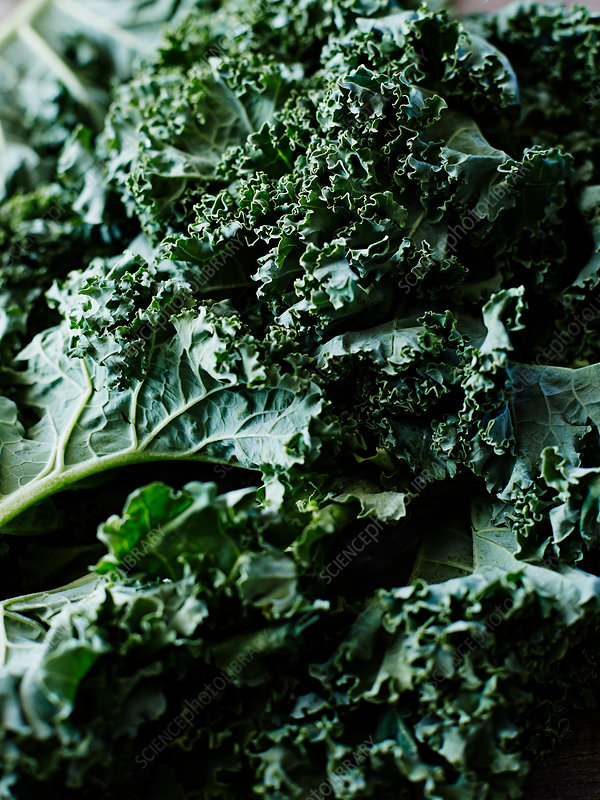
Nutritional Snapshot
Just one cup (21 g) of raw kale delivers:
-
~7‑8 calories, ~1 g carbs and ~1 g fiber.
-
Approx. 68 % of the Daily Value (DV) for vitamin K, about 22 % of DV for vitamin C, plus smaller amounts of vitamin A, manganese, folate, B‑vitamins and minerals. Low in fat, sugar and sodium.
Because it’s nutrient‐dense (lots of nutrition relative to calories), kale earns its “superfood” reputation.
7 Major Health Benefits of Kale
1. Packed with Antioxidants & Anti‑Inflammatory Compounds
Kale contains strong antioxidants like beta‑carotene, vitamin C, flavonoids (quercetin, kaempferol) and polyphenols. These help combat oxidative stress (free radicals) which can otherwise damage cells and contribute to aging and chronic disease.
Its anti‑inflammatory nutrients help tone down chronic inflammation — a key factor in many diseases.
2. Excellent for Bone & Blood Health (Vitamin K + Calcium)
One cup of raw kale provides a large portion of vitamin K, which is critical for blood clotting and also for bone‑metabolism (helping calcium integrate into bone matrix).
In addition, kale delivers a plant‑based source of calcium that is more bioavailable (absorbed) because kale has low oxalate levels compared to some other greens.
3. Supports Eye Health
Kale is rich in lutein and zeaxanthin — carotenoids that accumulate in the retina and help guard against age‑related macular degeneration and cataracts.
Beta‑carotene (which the body converts into vitamin A) in kale also supports vision and overall eye health. 4. Heart Health, Cholesterol & Blood Pressure
Because kale is rich in fiber, potassium, magnesium, and antioxidants, it supports cardiovascular health:
-
Fiber helps reduce LDL (“bad”) cholesterol via binding bile acids. Potassium and magnesium help regulate blood pressure and support healthy blood vessels.
-
Some studies showed reduced LDL cholesterol and improved blood markers when kale was consumed regularly.
5. Digestive Health & Weight Management
Kale’s fiber (especially insoluble fiber) supports regular bowel movements and helps feed beneficial gut bacteria (prebiotic effect).
Because it is low in calories but with good volume and fiber, kale can help with feeling full and supporting healthy weight management.
6. Possible Cancer‑Protective Effects
Kale, like other cruciferous vegetables, contains compounds such as glucosinolates, indole‑3‑carbinol and sulforaphane that may help neutralize carcinogens, damage to DNA and support detoxification pathways in the body.
While it’s not a guarantee, a diet high in green vegetables like kale is associated with lower risk of some cancers.
7. Detoxification & Overall Wellness
Some evidence suggests kale’s phytonutrients may help bind and remove certain toxins (e.g., mycotoxins) in the digestive tract.
Also, its nutrient richness supports general wellness, energy metabolism and resilience.
How to Choose, Store & Use Kale
-
Selecting: Choose bunches with dark green (or purple, depending on variety) firm leaves and no yellowing or slimy stems.
-
Storing: Wrap loosely in a paper towel or perforated bag and refrigerate; use within ~5 days for best quality.
-
Preparing: Remove the tough central rib if you prefer tenderness. Wash thoroughly (especially since kale can have surface residues). Then you can raw, sauté, steam, roast or add to smoothies
-
Serving ideas: Kale chips (roasted with olive oil), smoothies (kale + fruit + yogurt), leaf salads, sautéed with garlic, soups or stir‑fries.
Important Precautions & Who Should Be Cautious
While kale is very healthy for most people, some caveats apply:
-
Because of its high vitamin K content, people on blood‑thinning medications (e.g., warfarin) should monitor intake, as vitamin K can interfere with anticoagulant therapy.
-
Kale is rich in potassium; individuals with advanced kidney disease or on certain medications (e.g., potassium‑sparing) should be cautious.
-
Though kale has lower oxalate levels than some greens, people with calcium‑oxalate kidney stones should still watch total intake of high‑oxalate foods.
-
As with any crop, kale can carry pesticide residues—buying organic or washing thoroughly can reduce risk.
Final Thoughts
Incorporating kale into your diet is a smart, low‑cost way to boost nutrient intake, support eye, bone, heart and digestive health, and invest in long‑term wellness. While it’s not a magic cure‑all, kale’s nutrient density and health‑supporting properties mean it can play a big role as part of a balanced, plant‑rich diet.
Start simple: add a handful of chopped kale to your smoothie, mix leaves into soups or stir‑fries, or make a batch of kale chips for a crunchy snack. Over time, you’ll find that this humble green can make a meaningful difference in your health.

You must be logged in to post a comment.